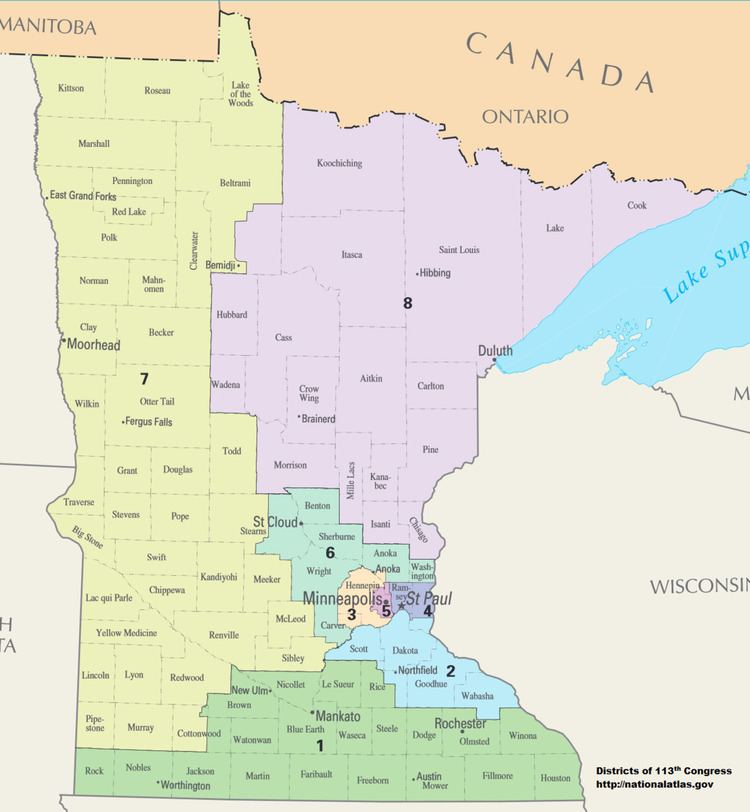 | ||
Minnesota is currently divided into 8 congressional districts, each represented by a member of the United States House of Representatives. After the 2010 Census, the number of Minnesota's seats remained unchanged.
Contents
- Current districts and representatives
- Districts
- Historical and present district boundaries
- Obsolete districts
- References
Minnesota statutes do not require candidates for the United States House of Representatives to reside in the district in which they run for office, but candidates must be inhabitants of the state at the time of the election.
Current districts and representatives
List of members of the Minnesotan United States House delegation, their terms, their district boundaries, and the districts' political ratings according to the CPVI. The delegation has a total of 8 members, including 5 Democrats, and 3 Republicans.
Districts
Districts were re-drawn in 2012. The 2010 elections determined the officials for the 2011–2013 term using 2002 districts, while the 2012 elections used the new districts. The 2002–2012 districts are described below:
Congressional districts are also used to ensure regional representation on other government bodies within the state. The following entities are required by state statute to have at least one member from each congressional district:
Historical and present district boundaries
Table of United States congressional district boundary maps in the State of Minnesota, presented chronologically. All redistricting events that took place in Minnesota between 1973 and 2013 are shown.
Obsolete districts
Minnesota currently has eight congressional districts. There were 9th and 10th districts but they were eliminated in 1963 and 1933 respectively. Redistricting is done every 10 years to reflect population shifts within the United States.
